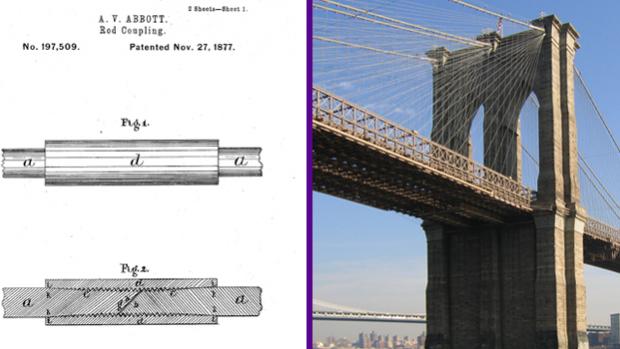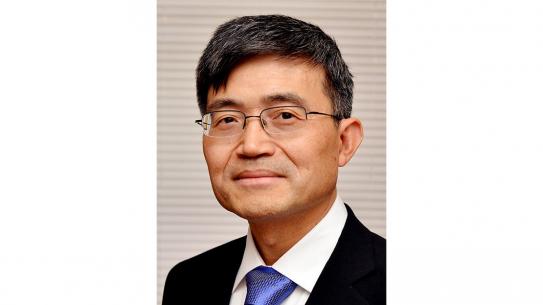Patently Proud

In a recent report published by the National Academy of Inventors and the Intellectual Property Owners Association, NYU ranked among the top-20 universities in the world based on the number of patents generated. Using data provided by the U.S. Patent and Trademark Office, they found that in 2014 — the year the merger between NYU and Poly was officially completed — 90 patents were credited to the university.
The School of Engineering has long been a powerhouse in that regard, with inventions that have improved every facet of life, from healthcare to leisure time. Read on to discover some of the most interesting and colorful innovations from our faculty members and alumni in decades past.
- After graduating in 1875, Arthur V. Abbott was appointed assistant engineer of the Brooklyn Bridge. Abbott's Testing Machine was used throughout bridge construction. He also invented a coupling system for the bridge cables, which provided increased strength and support.
- In 1945 Ernst Weber — a faculty member who served as the first president of the Institute of Electrical and Electronics Engineers (IEEE) and was instrumental in founding the school’s highly regarded Microwave Research Institute — patented the bolometer, an instrument that measures radio frequency currents.
- In 1948, George Ellner (‘21) patented a mechanism for using ultra-violet light for sterilization.
- In 1953, Jerome Lemelson (‘47, ‘49) won his first patent, and over the following 40 years, he averaged more than one patent a month, ultimately amassing more than 600. Among his hundreds of inventions were toys (a propeller beanie and a fishing game), medical devices (a talking thermometer), and the drive mechanism that made portable cassette players and camcorders possible.
- In 1962, Barouh Berkovits (Faculty) patented the DC defibrillator for the American Optical Corporation. DC shock became a dominant technology for medical personnel seeking to revive the human heart, and Berkovits was widely credited with saving millions of lives with that and subsequent innovations.
- In 1966, Helias Doundoulakis (‘60) patented the suspension system for what was until very recently the largest radio telescope in the world, which his older brother, George Doundoulakis (’53), had designed. (It can be found in Arecibo, Puerto Rico.)
- In 1973, Jerome Swartz (‘63, ’69) and Shelley Harrison (‘66, ’71) co-founded Symbol Technologies, where they patented the world’s first handheld laser barcode scanner and transformed commerce forever.
- In 1996, Charles Camarda (‘74) was chosen as an astronaut candidate by NASA, but in addition to logging over 333 hours in space, he holds several patents and has won over 20 awards for technical innovations, including the Heat-Pipe-Cooled Sandwich Panel, which reduced stress from high temperature in Scramjet engines.
- Samuel Ruben, who helped found the Duracell Company, never had a formal college education but is an important figure in School of Engineering history nonetheless. In 1967, he endowed a generous scholarship here, and in 1979, he was inducted as a Fellow of the Polytechnic Institute of New York (as the school was then known). More than 160 of his original patents can be found in the Poly Archives, which collectively trace his contributions to battery technology.
For a closer look at the School of Engineering's abundance of patents, visit Dibner Library’s current exhibit, “From Patents to Products,” on display through the end of the summer.




